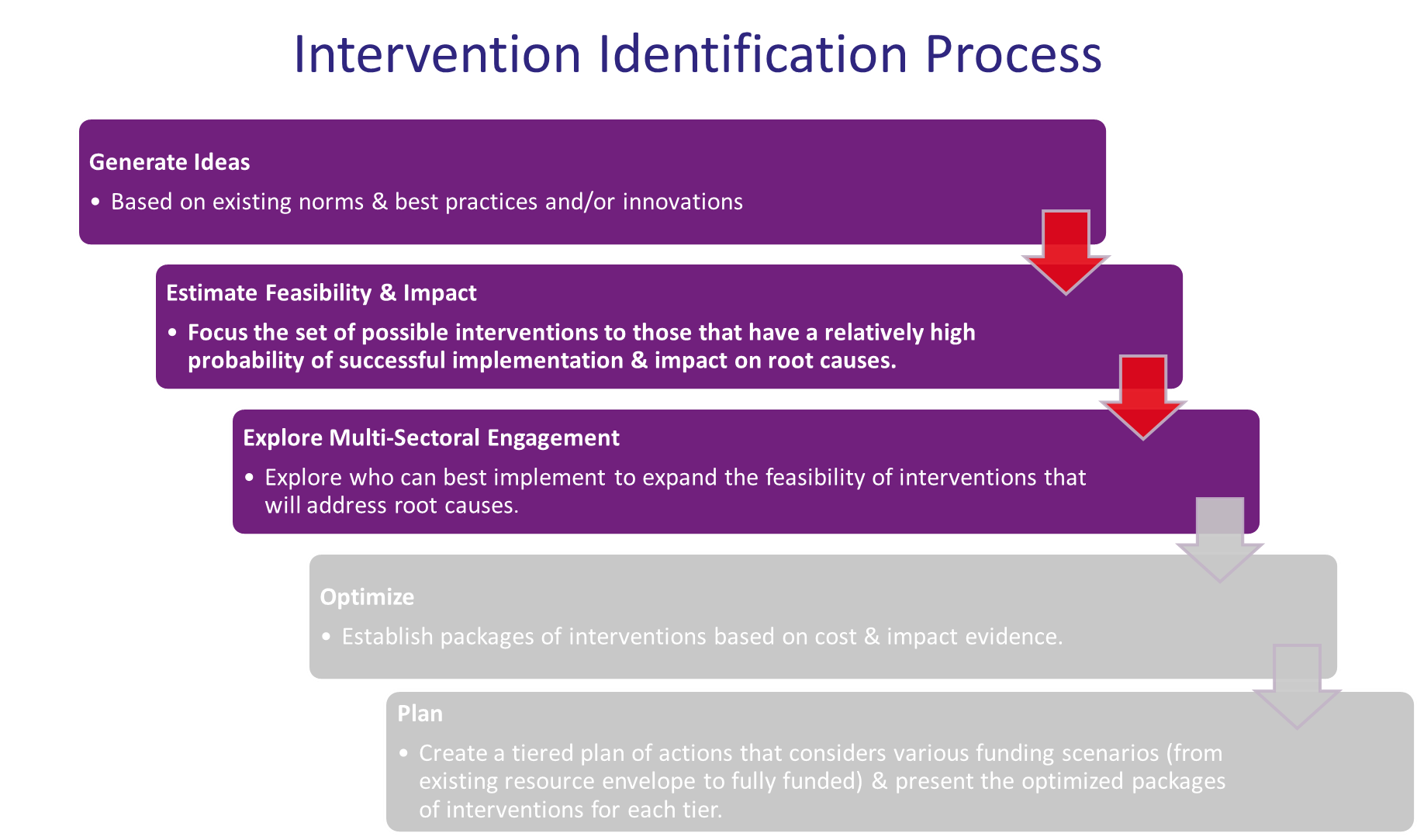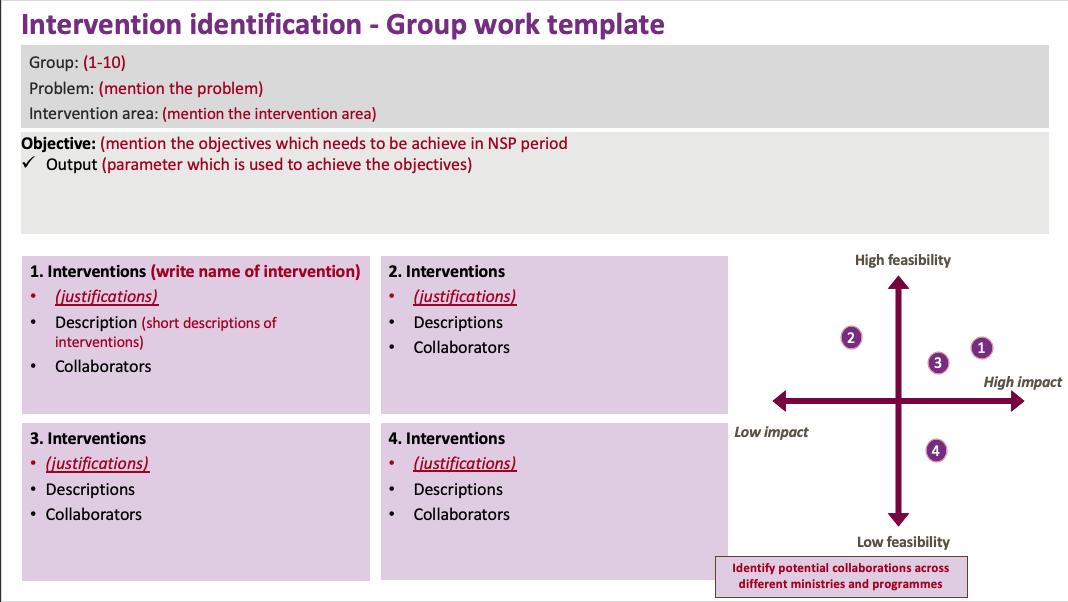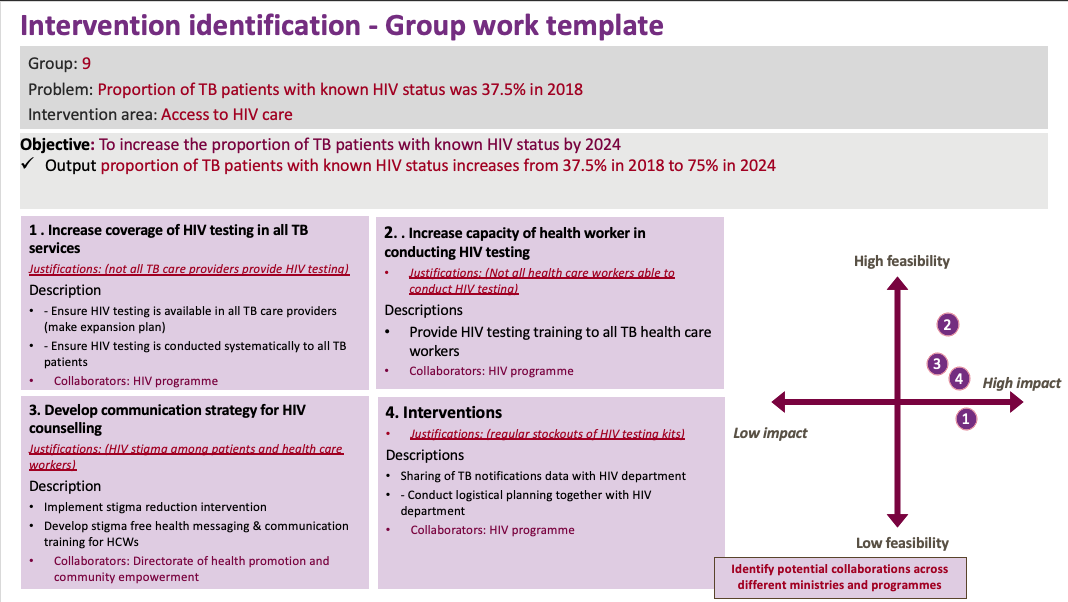The objective of this session is to explore and identify solutions addressing the priority issues – including their root causes identified during the previous problem prioritisation and root cause analysis sessions. While guided by international guidelines and best practices, this session draws on a mixture of creative and innovative “out-of-the-box” thinking – utilising local knowledge and experience as well as drawing on the comparative advantage different stakeholders bring to the table to maximise impact.
As with the other sessions, participants are encouraged to continue to identify critical information gaps that can inform future data needs and operational research agenda.
Overview of latest guidelines and best practices
At this point, it is helpful to insert a plenary session providing an overview of the latest global and national guidelines and best practice experiences on relevant action domains. This should also include relevant guidelines and initiatives from relevant related fields (e.g., Community, Rights & Gender, Universal Access, Social-protection, HIV). This should also include WHO rapid notifications, and initiatives/ developments showing great promise in initial evaluations which are in the pipeline for endorsement. This is to ensure that the infrequency of the planning process does not delay any timely uptake of innovations. If time allows, there should be room for some discussion and for participants to add their experiences and additional material to the presentation.
Groupwork
While some countries prefer to stick to the same small group composition throughout the workshop it might be beneficial at this point to slightly reconfigure the groups around the thematic intervention areas defined and agreed upon during the plenary presentation following the root cause analyses. Alternatively, some time should be set aside for groups to visit and interact with each other. This is important as at this stage there will be a lot of interdependency of interventions as well as a greater need to consult all stakeholders from different relevant constituencies.
Steps 5 and 6 of the consultative workshop can be further broken down into the following 5 sub-steps:

Intervention identification, addresses the first 3 steps: (1) Generating ideas, (2) Estimating feasibility & impact, and (3) Exploring multi-sectoral engagement. Step (4) Optimisation, addressed in the next section – intervention prioritisation, examines what programmes can realistically achieve within the resource envelope they have available.
Identification process
1. Generate Ideas
- Review intervention areas identified and agreed upon during the previous session
- Select a maximum of 9 action domains/ intervention areas that promise the best potential for the development of high-impact interventions
- Define the objectives which need to be achieved during the plan/ strategy implementation period to address the identified challenges/ priority problems and their root causes (apply the SMART principle: Specific, Measurable, Achievable, Relevant, and Time-bound)
- Define required outputs/ deliverables, which will lead to achieving the objectives
- Brainstorm on possible interventions/ solutions which will generate the outputs
- Develop/ select 2-4 strategic interventions per identified intervention area. Use the template provided to: name each intervention, provide a justification/ rationale, and provide a short description of the intervention.
2. Esitmate Feasibility and Impact
- Rank each intervention for feasibility and impact using the provided graph in the template (Assess each of the proposed interventions in terms of feasibility, likely impact to achieve the objectives).
- Perform a SWOT analysis if indicated and time permits.
3. Explore Multi-Sectoral Engagement
Identify potential collaborators (i.e., implementers, supporters, advocates, etc.) among stakeholders (including other government departments and programmes) – draw on the experience, network capacity, and commitment of the group members/ participants
Group work templates

Example using the group template 
Last Update: Tuesday, January 3, 2023